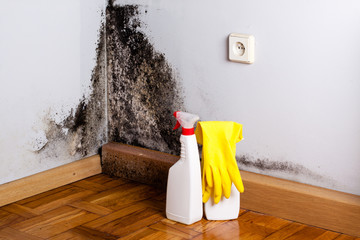Do-It-Yourself or Hire a Professional Mold Removal?
Hiring a professional Mold Remediation is essential as they are trained to identify the subtle clues that lead to mold growth. They can even find mold in places you would never think to look. The effects of mold exposure can vary from person to person, but the best course of action is mold removal. The EPA recommends professional help to identify the extent of the issue. If you’re experiencing the symptoms of allergies, it’s wise to contact a professional immediately. It’s best to avoid taking any risks for your health. Remember, mold is a fungus that grows in damp and moist places, including the home. Because it spreads through the air, it can pose a severe threat to humans.

If you’ve noticed a mold buildup in your home, your first thought may be to remove the mold yourself. However, mold removal is not an easy task, and it’s essential to get the problem treated by a professional. You can also do it yourself if you want to save money. However, it would be best to consider avoiding the idea of self-treatment due to its risk.
Listed below are the most common causes of mold growth and how to solve the problem. To start the process, properly isolating the area affected by the mold is essential. If you suspect that the contaminated area has a high spore count, you’ll want to enclose it with 6-mil polyethylene sheeting. Sealing it tightly with duct tape will help prevent mold spores from spreading.
The next step is to scrub the affected area with a detergent solution. Once the contaminated area has been cleaned, a professional will disinfect and encapsulate the surfaces. Mold removal may be easy if the area affected is less than 10 square feet. The EPA recommends that you first repair the source of the moisture. Then, wear an N95 respirator to protect your lungs and skin from spores.
Next, you should clean up any remaining debris on the wall. You can use a vacuum cleaner to clean the area to keep the air clean. If mold is present in a large area, you may want to hire a professional company. If you’ve noticed any signs of mold growth in your home, it’s crucial to get rid of it as soon as possible. If you don’t act fast, the problem could become a significant problem within a few days. The good news is that removing mold is not impossible, but there are a few things you can do to save money. Just remember to use mold-proof materials and be sure to ask about insurance coverage. Mold is far more likely to spread deeper than 10 square feet. If you’re trying to do the mold removal yourself, you run the risk of creating a more significant problem by removing the mold yourself.
Fortunately, many home remedies can help you clean up the mold. A bleach solution is an excellent option if you can’t afford a professional service. Make sure to follow the instructions on the bottle of bleach, as mixing it with other cleaning products could create a toxic gas. Wear rubber gloves and goggles and follow the manufacturer’s instructions when using bleach. These are just a few tips to follow if you want to clean up your home. Before removing mold, it’s essential to determine whether you need to remove it entirely or clean it up. Remember that you can’t remove mold altogether – you can only clean up the spores.
If the mold infestation is extensive, you’ll need the services of a professional mold remediation service. However, if it’s just a minor problem, you can do the job yourself. Mold removal services can cost anywhere from $2,000 to $6,000, so you’ll want to know what you can afford before committing. If you’re cleaning out a small space, you can likely handle the task yourself with the help of a mold cleaner and protective gear. However, if you need to clean out a large area, it will probably cost you more than $6,000. It’s important to understand that some molds are more expensive to remove than others, and they are more likely to cause health issues than others. The most common types of indoor mold are fusarium and aspergillus. For example, it can cause infections of the nails and corneas. Additionally, it can lead to systemic septic infections if spores enter the bloodstream.
